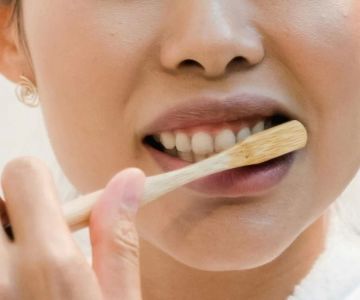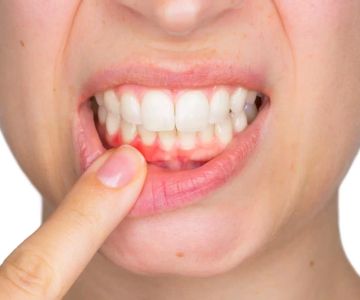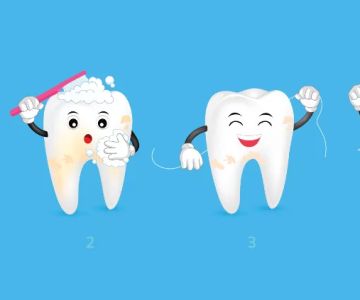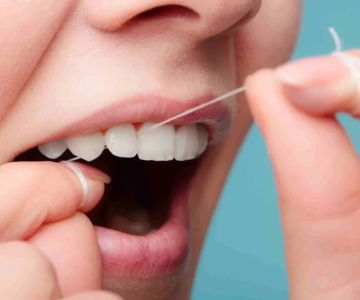The Best Toothbrush for Sensitive Teeth: A Complete Guide to Choosing the Right One
- Why Sensitive Teeth Need Special Care
- Features of the Best Toothbrush for Sensitive Teeth
- Electric vs Manual Toothbrush for Sensitive Teeth
- Top Recommended Toothbrushes for Sensitive Teeth
- How to Use a Toothbrush for Sensitive Teeth
- Additional Tips for Sensitive Teeth Care
1. Why Sensitive Teeth Need Special Care
For individuals with sensitive teeth, brushing can be a painful experience. Sensitive teeth occur when the enamel wears down, or gums recede, exposing the underlying dentin. This makes your teeth more vulnerable to temperature changes, acidic foods, and pressure from regular brushing. Sensitive teeth require a special toothbrush that helps minimize discomfort while still providing effective cleaning.
When choosing the best toothbrush for sensitive teeth, it’s essential to consider factors like bristle softness, design, and technology. The right toothbrush can make a significant difference in reducing pain and improving overall dental health.
2. Features of the Best Toothbrush for Sensitive Teeth
The ideal toothbrush for sensitive teeth should be gentle yet effective. Here are some key features to look for:
- Soft Bristles: Toothbrushes with soft bristles are crucial for avoiding further irritation to sensitive gums and enamel.
- Gentle Motion: Toothbrushes that provide a gentle brushing action help clean the teeth effectively without causing pain.
- Ergonomic Handle: A comfortable grip can help you brush with better control, reducing the risk of brushing too hard.
- Built-in Pressure Sensor: Some electric toothbrushes come with a pressure sensor that alerts you when you're brushing too hard, which can be particularly helpful for people with sensitive teeth.
These features work together to make brushing comfortable, efficient, and safe for those with tooth sensitivity.
3. Electric vs Manual Toothbrush for Sensitive Teeth
When it comes to choosing between an electric or manual toothbrush for sensitive teeth, both options have their pros and cons. Let’s explore each option:
- Electric Toothbrush: An electric toothbrush can be more effective in providing consistent brushing motion, which is especially beneficial for individuals with limited dexterity. Many electric toothbrushes have settings designed specifically for sensitive teeth, allowing for gentler brushing with less effort.
- Manual Toothbrush: A manual toothbrush gives you full control over pressure and motion. While it may require more effort to achieve the same results as an electric brush, it can be a good option for those who prefer simplicity and less maintenance.
If you are looking for ease of use and advanced features, an electric toothbrush might be the better choice. However, a manual toothbrush can also be effective if used properly.
4. Top Recommended Toothbrushes for Sensitive Teeth
Here are some of the best toothbrushes for sensitive teeth, based on expert recommendations and customer reviews:
- Philips Sonicare ProtectiveClean 6100: This electric toothbrush offers multiple settings, including one for sensitive teeth. The pressure sensor alerts you when you’re brushing too hard, helping you protect your gums and enamel.
- Oral-B Pro 1000 Power Rechargeable Electric Toothbrush: Known for its gentle brushing action, this toothbrush is ideal for those with sensitive teeth. It also provides a two-minute timer to ensure you brush for the optimal time.
- Colgate 360° Sensitive Toothbrush: This manual toothbrush is designed with ultra-soft bristles, making it a great choice for those with sensitive gums and teeth.
- TePe Select Soft Toothbrush: A highly recommended soft-bristled manual toothbrush that is perfect for anyone with tooth sensitivity or gum issues.
These toothbrushes are widely recognized for their ability to clean effectively without causing discomfort, and they are ideal for sensitive teeth.
5. How to Use a Toothbrush for Sensitive Teeth
Proper technique is just as important as choosing the right toothbrush. Here are some tips to help you brush your sensitive teeth effectively:
- Use gentle pressure: Avoid brushing too hard, as it can irritate your gums and cause more sensitivity. Let the toothbrush do the work.
- Brush for two minutes: Ensure that you brush your teeth for a full two minutes to remove plaque and bacteria without overworking your teeth and gums.
- Brush in gentle circles: Instead of scrubbing back and forth, use gentle circular motions to minimize pressure on sensitive areas.
- Don’t forget your tongue: Gently brush your tongue to remove bacteria and avoid bad breath, but don’t apply too much pressure.
By following these tips, you can maximize the benefits of your toothbrush while protecting your sensitive teeth.
6. Additional Tips for Sensitive Teeth Care
Aside from using the right toothbrush, there are several other practices that can help reduce tooth sensitivity:
- Use desensitizing toothpaste: These toothpastes contain compounds that help block pain signals to the nerves in your teeth.
- Rinse with fluoride mouthwash: Fluoride strengthens enamel and helps reduce sensitivity.
- Avoid acidic foods: Citrus fruits, tomatoes, and soda can erode enamel and worsen sensitivity.
- Visit your dentist regularly: Regular check-ups can help identify and treat any underlying issues that may be contributing to tooth sensitivity.
By combining the right toothbrush with good oral care habits, you can manage sensitive teeth effectively and keep your smile healthy.
If you’re looking for the best toothbrush for sensitive teeth, explore more options at Dentistry Toothtruth. Find expert recommendations and the latest products designed to provide relief for sensitive teeth.







 Westgate Dental Arts3.0 (2 review)
Westgate Dental Arts3.0 (2 review) Coventry Family Dental4.0 (247 review)
Coventry Family Dental4.0 (247 review) Familia Dental3.0 (1028 review)
Familia Dental3.0 (1028 review) Dr. Daniel S. Fife, DDS4.0 (31 review)
Dr. Daniel S. Fife, DDS4.0 (31 review) Dentistry At Suburban Square: Michael I. Wollock, DMD4.0 (1228 review)
Dentistry At Suburban Square: Michael I. Wollock, DMD4.0 (1228 review) Comfort Care Dental4.0 (1156 review)
Comfort Care Dental4.0 (1156 review) The Importance of Oral Health Education During Pregnancy for a Healthy Pregnancy
The Importance of Oral Health Education During Pregnancy for a Healthy Pregnancy Why Skipping Dental Checkups Can Lead to Bigger Oral Health Problems
Why Skipping Dental Checkups Can Lead to Bigger Oral Health Problems Best Tips for Brushing Your Teeth Properly for Healthy Gums: Essential Techniques for Oral Health
Best Tips for Brushing Your Teeth Properly for Healthy Gums: Essential Techniques for Oral Health Advantages of Porcelain Dental Restorations
Advantages of Porcelain Dental Restorations How Can Diabetes Cause Tooth and Gum Problems? Preventing and Managing Oral Health Issues
How Can Diabetes Cause Tooth and Gum Problems? Preventing and Managing Oral Health Issues Healthy Habits for Promoting Good Oral Health and Hygiene: Tips for a Healthy Smile
Healthy Habits for Promoting Good Oral Health and Hygiene: Tips for a Healthy Smile